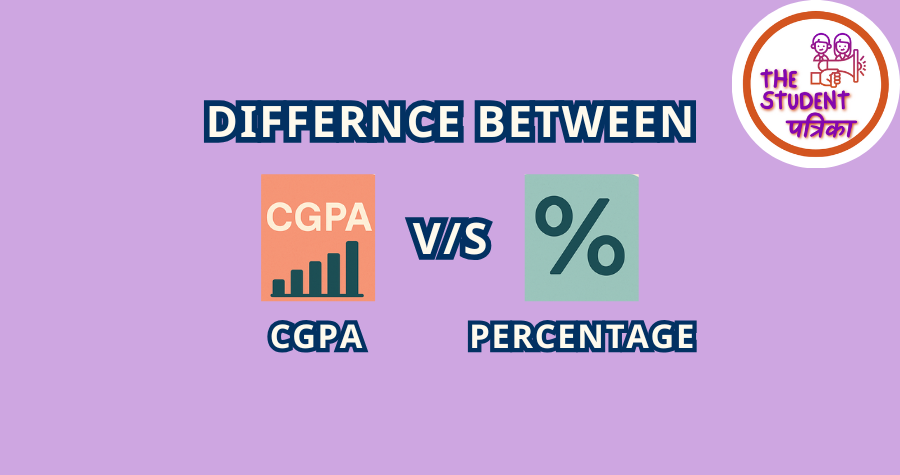
If you’ve ever looked at your report card and thought, “What exactly is CGPA, and how is it different from a percentage?”—you’re definitely not alone. This question has puzzled many students, parents, and even a few teachers. The good news? It’s not as confusing as it seems once we break it down. So grab a cup of chai or coffee, and let’s talk numbers—but in a human way.
First, What Is CGPA?
CGPA stands for Cumulative Grade Point Average. It’s a system that calculates your average performance over a set of subjects or semesters. Instead of showing marks out of 100 for each subject, CGPA shows a grade point—usually on a 10-point scale.
Let’s say you get the following grade points in five subjects: 8.2, 7.6, 9.0, 7.8, and 8.4. Your CGPA will be the average of these numbers. Add them up, divide by five, and voilà, that’s your CGPA.
What About Percentage?
Percentage is what we’ve all grown up with. It’s simple and familiar. If you score 78 out of 100, that’s 78 percent. Everyone gets it. No decoding required. This system shows your performance in exact marks, which makes it a bit more transparent for most people.
While percentage tells you how much you’ve scored out of the total, CGPA is more of a summary. It’s like the difference between seeing the full movie and watching the trailer. Both tell you something, but one gives a different kind of picture.
Why Do We Even Have CGPA?
Fair question. CGPA came into the spotlight when education boards wanted to reduce the pressure of exact marks. Think about it. A student scoring 91 and another scoring 89 would be separated by just two marks, but that gap could cause unnecessary stress.
So instead of saying, “You scored 92,” we now say, “You’re an A+ student with a grade point of 9.2.” Sounds nicer, right? Less comparison. More focus on learning.
Besides, CGPA helps in creating a uniform system that is easier to convert and understand internationally. It makes life easier when applying to foreign universities.
The Main Differences Between CGPA and Percentage?
Let’s break it down without using any fancy academic jargon:
1. Format
CGPA is measured on a scale, usually 10.
Percentage is calculated out of 100.
2. Precision
CGPA gives you a rounded average (like 8.4), not the exact marks.
Percentage tells you exactly how much you’ve scored (like 84 percent).
3. Pressure
CGPA is generally seen as a stress-reliever.
Percentage can feel a bit more intense, since every mark counts.
4. Interpretation
CGPA requires conversion if someone wants to know the equivalent percentage.
Percentage needs no conversion, which makes it easier for the average person to understand.
5. Usage
CGPA is more common in schools and colleges following CBSE, some state boards, and universities.
Percentage is widely used in traditional systems and is still the most recognized method in many government and private job applications.
CGPA to Percentage: The Handy Formula
Now, this part’s important. If you’ve got your CGPA and you’re scratching your head thinking, “What’s my percentage?” here’s the simple formula used by CBSE and many other boards:
Percentage = CGPA multiplied by 9.5
So if your CGPA is 8.2, your percentage would be: 8.2 × 9.5 = 77.9 percent
Keep in mind, different universities or boards might use different multipliers like 9.0 or 10. So always check the official conversion rule.
Is One Better Than the Other?
That depends on how you look at it. If you prefer clarity and precision, percentage might feel better to you. It tells you exactly how much you’ve scored and gives a straightforward view of your performance. But if you believe in a stress-free academic environment where minor mark differences don’t define your abilities, CGPA offers a more relaxed approach. It’s like giving students some breathing room. At the end of the day, both systems aim to reflect the same thing: how well you’ve performed. They’re just two ways of showing the same story.
Real-Life Confusion: A Student’s Story
Let’s say Riya just finished her 10th-grade exams. She’s super happy with her results. Her CGPA is 9.4. Her relatives, as expected, ask the classic question: “Beta, how much percent did you get?” Now Riya doesn’t want to mess this up. She does a quick calculation: 9.4 × 9.5 = 89.3 percent. Impressed faces all around. But notice what happened here. A CGPA on its own didn’t mean much to her relatives. The moment it became a percentage, it clicked. That’s the beauty and the limitation of CGPA. It’s smooth and modern but still needs translation sometimes.
Final Thoughts: Which One Should You Care About?
If you're a student, just focus on learning and improving. Whether your board uses CGPA or percentage, what really matters is your understanding of the subject. Employers and colleges often care more about skills and depth of knowledge than just numbers. That said, knowing the difference between CGPA and percentage helps you better present yourself in job interviews, applications, and even casual conversations with your curious uncle.
So, next time someone asks you what CGPA means, you won’t just give them a number—you’ll tell them the whole story.
Comments
Stromectol pharmacy verified <a href=https://gdoorx.com/>stromectol 12mg review</a> stromectol tablets side effects https://gdoorx.com/ - stromectol for strongyloidiasis buy
Superb forum posts Cheers. casino en ligne Excellent info Regards. casino en ligne fiable Reliable stuff, With thanks. casino en ligne francais Whoa plenty of valuable advice! casino en ligne Superb advice With thanks. casino en ligne fiable Superb info, Regards! casino en ligne fiable Whoa quite a lot of awesome information. casino en ligne You have made your point! casino en ligne fiable You actually stated it effectively! casino en ligne fiable You actually explained that superbly! casino en ligne










